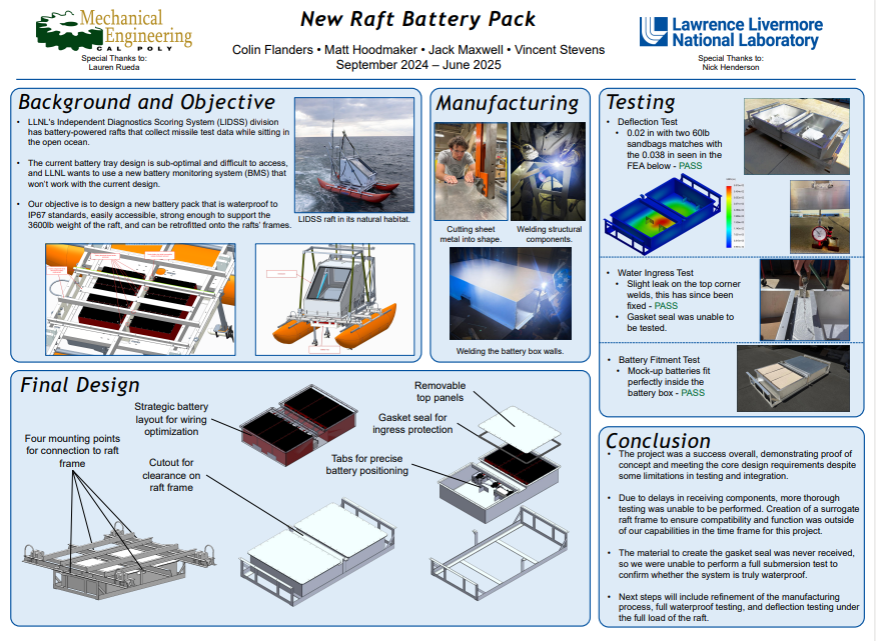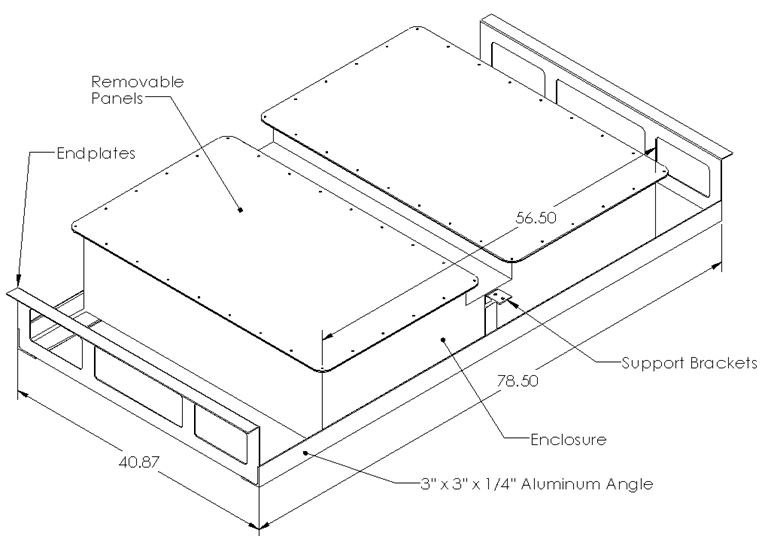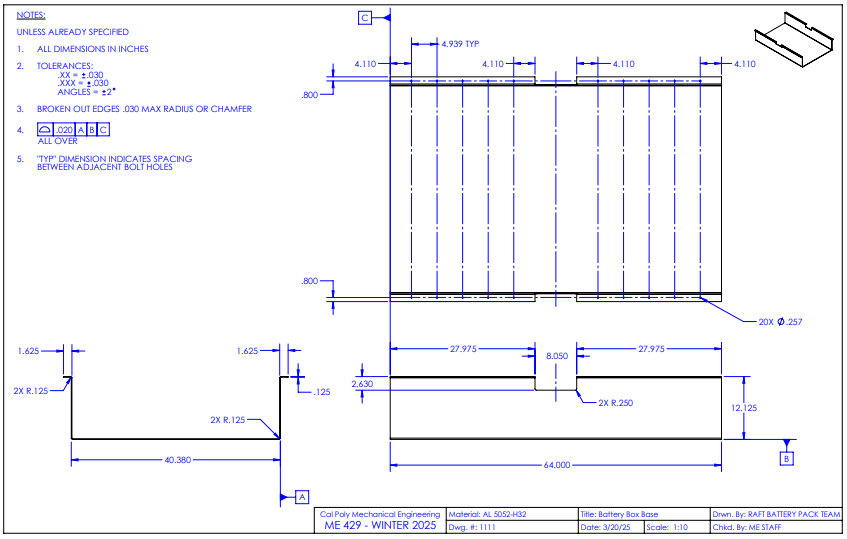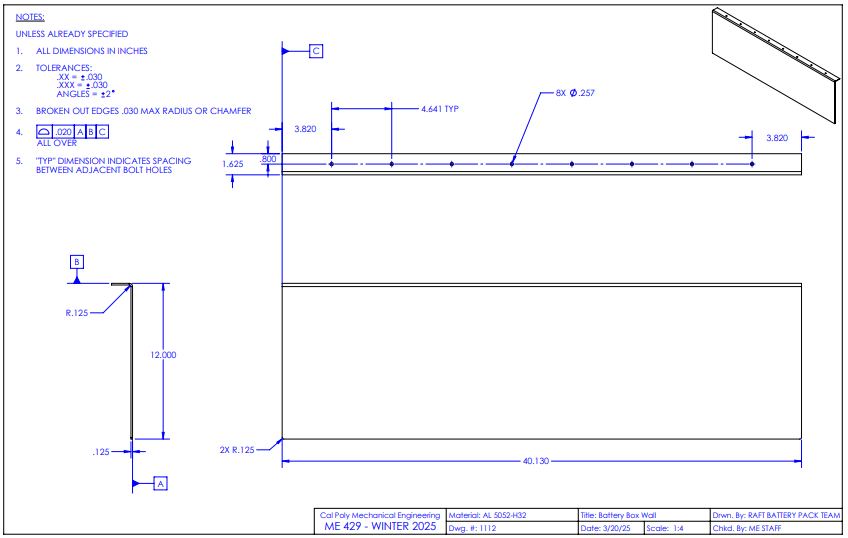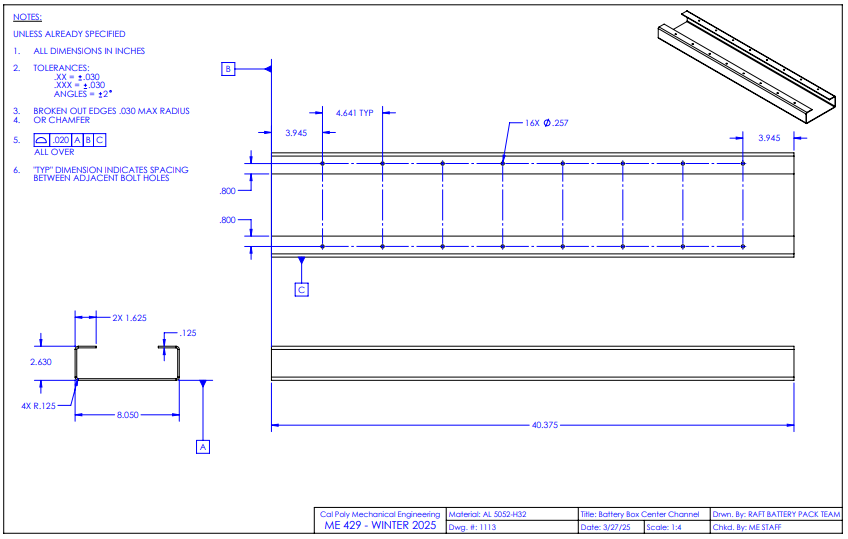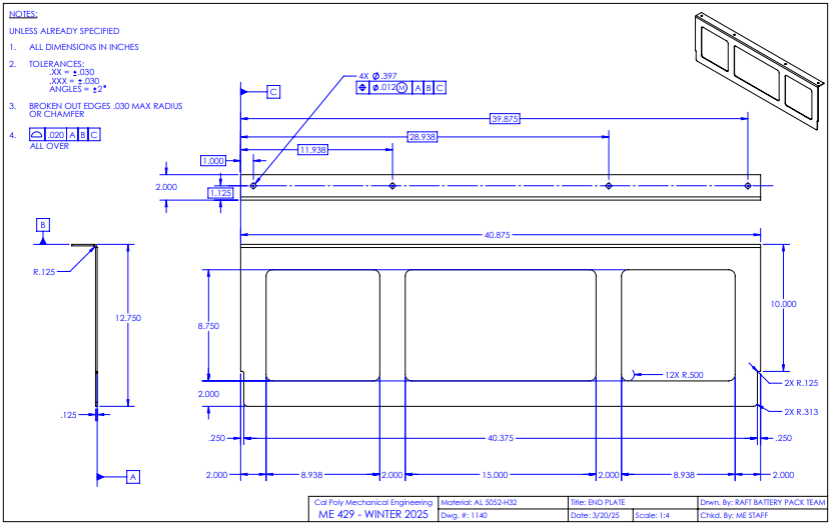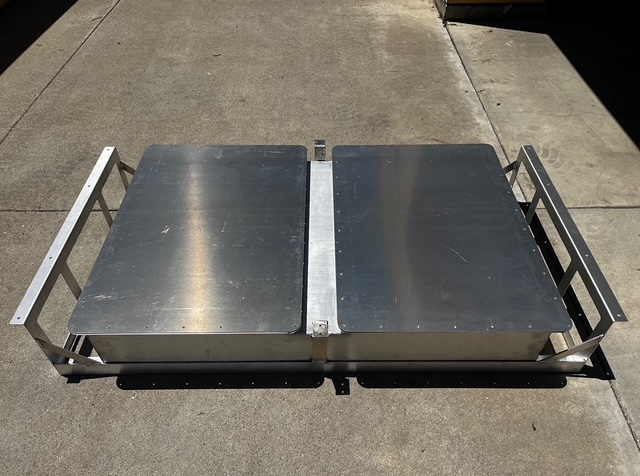Hello! My name is Matt Hoodmaker and I love to build and design things.
Here are a few of the projects I have been working on recently. Hope you enjoy!
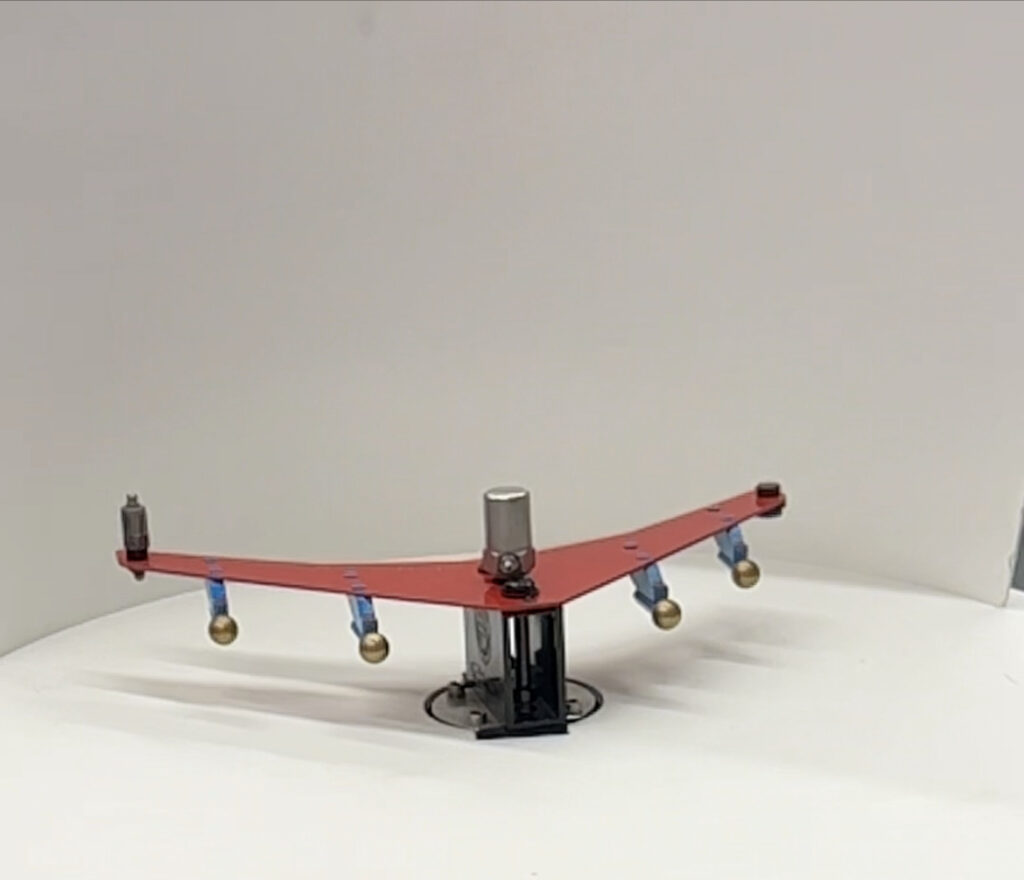

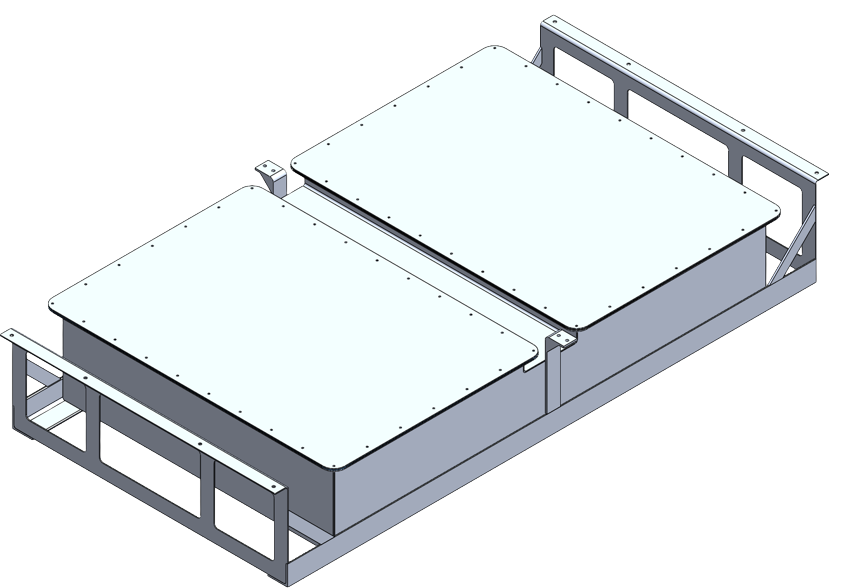
*click the buttons above, or scroll to each section*
SLO Propulsion Technologies - Tiny Rocket
The goal of this project was to design, manufacture, and test a pressure driven bipropellant rocket engine in 10 weeks. The engine needed to produce 20 pounds of thrust and have a chamber pressure of 300 psi.
Using ethanol as fuel and gaseous oxygen as the oxidizer, this engine was designed to be fuel-rich with a mixture ratio of 2.4 (oxidizer to fuel), and fire with 20 pound-force of thrust.
Utilizing Rocket Propulsion Analysis (RPA) and SolidWorks, I designed the injector plate and thrust chamber assembly. I then manufactured the engine out of aluminum stock using a lathe and mill.
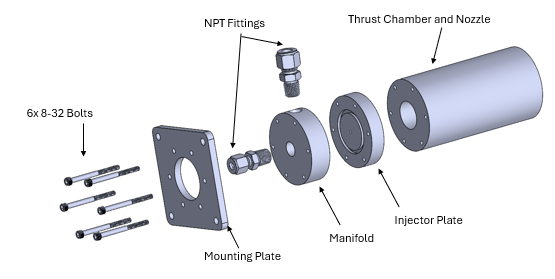

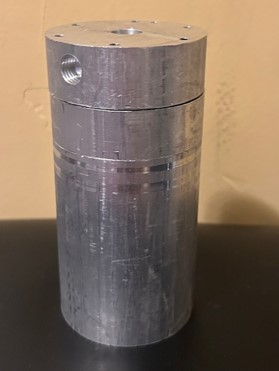
Personal Projects
Skateboard Weight Reduction Trucks
I am currently designing weight reduction trucks for a skateboard with the goal of removing as much weight as possible without impacting the overall function of the skateboard truck itself.
Through iterations between CAD and hand calculations, I was able to determine the amount of material I could remove and I am now in the process of utilizing FEA to ensure that each truck can withstand 90 pounds of force with a factor of safety of 2.
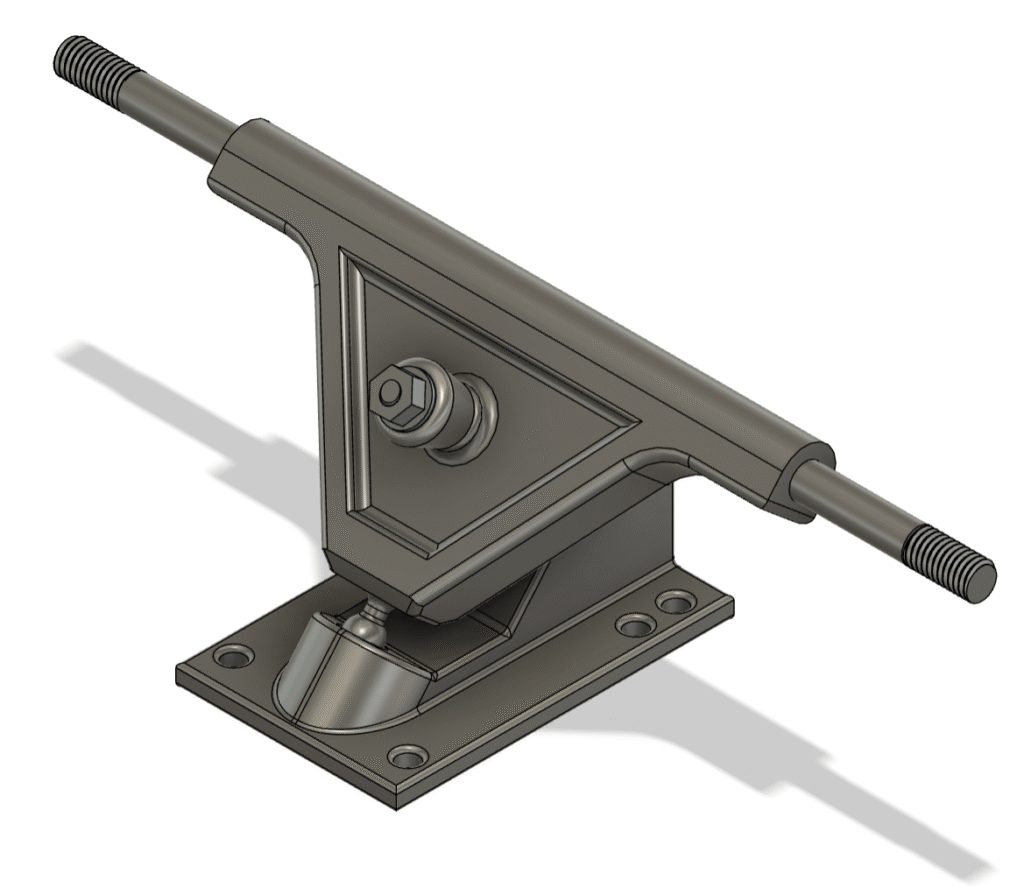
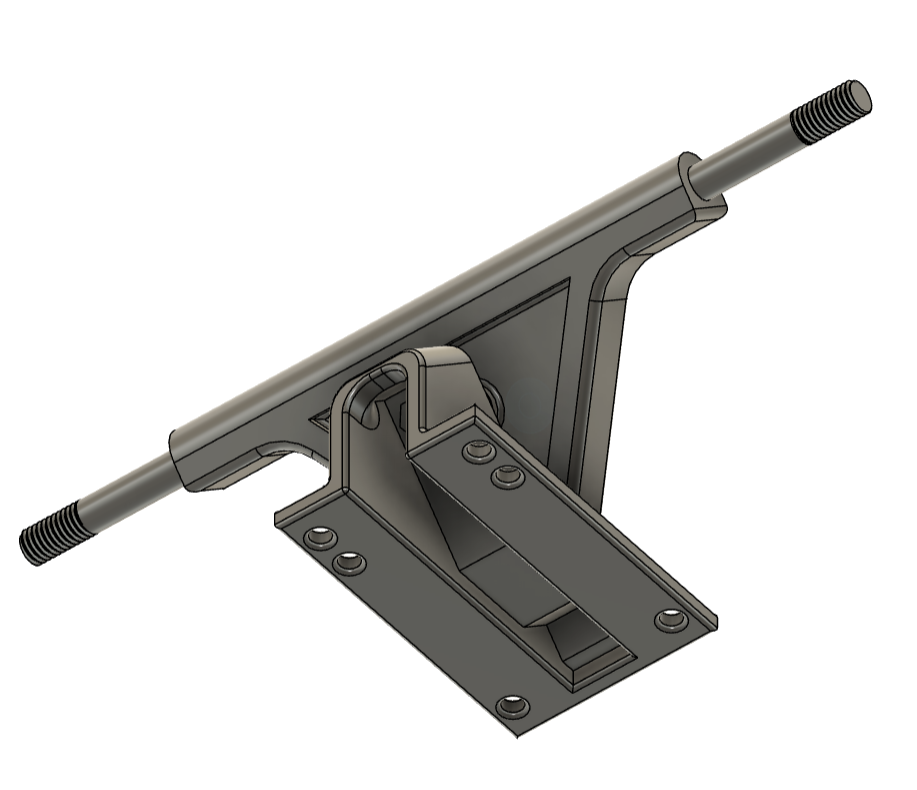
In my design, I also accounted for sharp edges and corners and minimized these using fillets and chamfers to help avoid stress concentrations.
School Projects
Cal Poly Senior Project
For my senior project, I worked with three other Cal Poly fourth-year mechanical engineering students. Our project was sponsored by Lawrence Livermore National Laboratory.
We collaborated directly with representatives from the LLNL Independent Diagnostic Scoring System (LIDSS) team to design, build, and test a prototype of a new battery tray enclosure for ocean-going autonomous rafts.
The previous housing for the raft’s batteries was not optimized. Its open-air frame meant that the batteries had experienced corrosion issues and fouling. Additionally, LIDSS wanted to use a new battery monitoring system (BMS) on the rafts which would not work in the existing housing. Our job was to re-design the raft’s battery housing such that it could be retrofitted onto the current rafts, it was easily accessible, it protected the batteries from corrosion, and it was strong enough to support the weight of the raft.
Our solution is constructed from CNC-cut aluminum sheet metal which we bent and welded together, as well as aluminum angle stock, custom rubber gaskets, and stainless steel fasteners. Our design centers around ingress protection and corrosion resistance, while remaining relatively lightweight and allowing for ease-of-maintenance.
From this project, I learned a lot about the importance of utilizing DFM principles early in the development phase.
The engineering drawings can be seen below:
